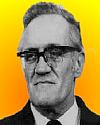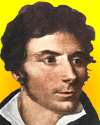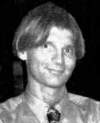
Born 11 Aug 1956.
French mathematician who was awarded the Fields Medal in 1994 for his work since the 1980's on partial differential equations. The sources of such equations are many - for example, physical, probalistic or geometric and other diverse subareas - each studying different phenomena for different nonlinear partial differential equations by utterly different methods. Pierre-Louis Lions has been called unique in his ability to transcend these boundaries and to solve pressing problems throughout the field.
French mathematician who was awarded the Fields Medal in 1994 for his work since the 1980's on partial differential equations. The sources of such equations are many - for example, physical, probalistic or geometric and other diverse subareas - each studying different phenomena for different nonlinear partial differential equations by utterly different methods. Pierre-Louis Lions has been called unique in his ability to transcend these boundaries and to solve pressing problems throughout the field.
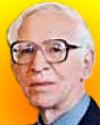
Born 11 Aug 1926. quotes
British biochemist who received the 1982 Nobel Prize for Chemistry "for his development of crystallographic electron microscopy and his structural elucidation of biologically important nucleic acid-protein complexes." Whereas X-ray diffraction patterns reveal any highly ordered three-dimensional crystalline structures, the technique fails for those biological samples with less suitably ordered molecular structures. However Klug developed crystallographic electron microscopy which combined certain principles of the diffraction methods with electron miscroscopy so that he could figure out the 3-D structure of viruses or samples of complicated combinations of nucleic acids and proteins as found in membranes, muscle fibres and chromosomes.«
British biochemist who received the 1982 Nobel Prize for Chemistry "for his development of crystallographic electron microscopy and his structural elucidation of biologically important nucleic acid-protein complexes." Whereas X-ray diffraction patterns reveal any highly ordered three-dimensional crystalline structures, the technique fails for those biological samples with less suitably ordered molecular structures. However Klug developed crystallographic electron microscopy which combined certain principles of the diffraction methods with electron miscroscopy so that he could figure out the 3-D structure of viruses or samples of complicated combinations of nucleic acids and proteins as found in membranes, muscle fibres and chromosomes.«
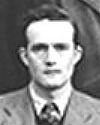
c. 1948
Born 11 Aug 1921; died 17 Jan 2001 at age 79.
British electrical engineer who wrote the computer program used to test the first stored-program computer, the Small-Scale Experimental Machine, SSEM, also known as "The Baby." First tested on 21 Jun 1948, the program took 52 minutes to run. The tiny experimental computer had no keyboard or printer, but it successfully tested a memory system developed at Manchester University in England. This system, based on a cathode-ray tube, was the first that could store programs, whereas previous electronic computers had to be rewired to execute each new problem.
British electrical engineer who wrote the computer program used to test the first stored-program computer, the Small-Scale Experimental Machine, SSEM, also known as "The Baby." First tested on 21 Jun 1948, the program took 52 minutes to run. The tiny experimental computer had no keyboard or printer, but it successfully tested a memory system developed at Manchester University in England. This system, based on a cathode-ray tube, was the first that could store programs, whereas previous electronic computers had to be rewired to execute each new problem.
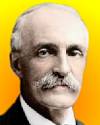
Born 11 Aug 1865; died 4 Oct 1946 at age 81. quotes
American forester who as the first chief of the U.S. Forest Service popularized the conservation of natural resources. He became chief of the new Forest Service in 1905 when the management of the forest reserves was transferred to the Dept. of Agriculture from the Dept. of the Interior. At that time, the nation had 60 forest reserves covering 56 million acres. In his five years in office, by 1910 those numbers increased to 150 national forests covering 172 million acres. He is regarded as a father of American conservation because of his great and unrelenting concern for the protection of the American forests. His efforts were supported by President Theodore Roosevelt, but not by his successor, President Taft, who fired Pinchot on 7 Jan 1910.« more
American forester who as the first chief of the U.S. Forest Service popularized the conservation of natural resources. He became chief of the new Forest Service in 1905 when the management of the forest reserves was transferred to the Dept. of Agriculture from the Dept. of the Interior. At that time, the nation had 60 forest reserves covering 56 million acres. In his five years in office, by 1910 those numbers increased to 150 national forests covering 172 million acres. He is regarded as a father of American conservation because of his great and unrelenting concern for the protection of the American forests. His efforts were supported by President Theodore Roosevelt, but not by his successor, President Taft, who fired Pinchot on 7 Jan 1910.« more
Breaking New Ground (autobiography), by Gifford Pinchot. - book suggestion.
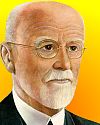
Born 11 Aug 1861; died 7 Mar 1954 at age 92. quotes
American physician and clinical cardiologist who was the first to observe and describe sickle-cell anemia. In 1910, he reported an unusual case he had examined. The patient was a 20-year-old West Indies student, attending a dental school in Chicago. "His illness had begun with malaise, pain in the back, the muscles of the legs and arms. He had a slight fever and was pale... he had suffered from a bilious attack... had vomited and... somewhat short of breath." In a blood test, Herrick found "nucleated reds were numerous [normal red blood cells lack a nucleus], 74 being seen in a count of 200 leukocytes [white blood cells]. The shape of the reds was very irregular... [with a] large number of thin, elongated, sickle-shaped and crescent-shaped forms."
American physician and clinical cardiologist who was the first to observe and describe sickle-cell anemia. In 1910, he reported an unusual case he had examined. The patient was a 20-year-old West Indies student, attending a dental school in Chicago. "His illness had begun with malaise, pain in the back, the muscles of the legs and arms. He had a slight fever and was pale... he had suffered from a bilious attack... had vomited and... somewhat short of breath." In a blood test, Herrick found "nucleated reds were numerous [normal red blood cells lack a nucleus], 74 being seen in a count of 200 leukocytes [white blood cells]. The shape of the reds was very irregular... [with a] large number of thin, elongated, sickle-shaped and crescent-shaped forms."
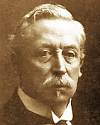
Born 11 Aug 1858; died 5 Nov 1930 at age 72. quotes
Dutch scientist, physician, hygienist who demonstrated that beriberi is caused by poor diet led to the discovery of vitamins. He investigated beriberi (Sinhalese word for “extreme weakness”) in the Dutch East Indies in 1886. Because an attendant had been feeding his laboratory chickens with cooked white rice instead of whole rice, Eijkman discovered by accident that diet produced a disease resembling beriberi in human beings. Experimenting with a diet of polished rice, Eijkman reproduced these results (1897). He was the first to recognize that the human disease, too, was caused by lack of essential food factor (later shown to be thiamine, vitamin B1). For this work, he shared (with Sir Frederick Gowland Hopkins) the Nobel Prize in Physiology or Medicine in 1929.
Dutch scientist, physician, hygienist who demonstrated that beriberi is caused by poor diet led to the discovery of vitamins. He investigated beriberi (Sinhalese word for “extreme weakness”) in the Dutch East Indies in 1886. Because an attendant had been feeding his laboratory chickens with cooked white rice instead of whole rice, Eijkman discovered by accident that diet produced a disease resembling beriberi in human beings. Experimenting with a diet of polished rice, Eijkman reproduced these results (1897). He was the first to recognize that the human disease, too, was caused by lack of essential food factor (later shown to be thiamine, vitamin B1). For this work, he shared (with Sir Frederick Gowland Hopkins) the Nobel Prize in Physiology or Medicine in 1929.
Beriberi, White Rice And Vitamin B: A Disease, A Cause and A Cure, by Kenneth J. Carpenter. - book suggestion.
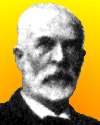
Born 11 Aug 1836; died 14 Jan 1902 at age 65.
Norwegian chemist who, with his brother-in-law Peter Waage, formulated the law of mass action (1864), which details the effects of concentration, mass, and temperature on chemical reaction rates. The law states that the rate of a chemical change depends on the concentrations of the reactants. Thus for a reaction: A + B -> C the rate of reaction is proportional to [A][B], where [A] and [B] are concentrations. In 1870 Guldberg investigated the way in which the freezing point and vapor pressure of a pure liquid are lowered by a dissolved component. In 1890 he formulated Guldberg's law which relates boiling point and critical temperature.
Norwegian chemist who, with his brother-in-law Peter Waage, formulated the law of mass action (1864), which details the effects of concentration, mass, and temperature on chemical reaction rates. The law states that the rate of a chemical change depends on the concentrations of the reactants. Thus for a reaction: A + B -> C the rate of reaction is proportional to [A][B], where [A] and [B] are concentrations. In 1870 Guldberg investigated the way in which the freezing point and vapor pressure of a pure liquid are lowered by a dissolved component. In 1890 he formulated Guldberg's law which relates boiling point and critical temperature.
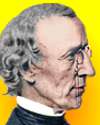
Born 11 Aug 1815; died 4 Sep 1874 at age 59. quotes
American comparative anatomist and naturalist whose career began as an assistant physician, anatomy demonstrator and curator of the Lowell Museum, but later turned from medicine to comparative anatomy and anthropology. Wyman made the first scientific study of gorillas (the name he clarified), and identified them as a species different from orangutans. His paper announcing the newly discovered gorilla species was published in 1847 in the Journal of the Boston Society of Natural History. Wyman had a good talent for making detailed drawings. Although he also had expertise equal to that of his contemporaries at Harvard, Asa Gray and Louis Agassiz, Wyman’s personal modesty has left him remembered as less prominent.«
American comparative anatomist and naturalist whose career began as an assistant physician, anatomy demonstrator and curator of the Lowell Museum, but later turned from medicine to comparative anatomy and anthropology. Wyman made the first scientific study of gorillas (the name he clarified), and identified them as a species different from orangutans. His paper announcing the newly discovered gorilla species was published in 1847 in the Journal of the Boston Society of Natural History. Wyman had a good talent for making detailed drawings. Although he also had expertise equal to that of his contemporaries at Harvard, Asa Gray and Louis Agassiz, Wyman’s personal modesty has left him remembered as less prominent.«
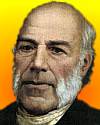
Born 11 Aug 1799; died 5 Oct 1883 at age 84.
French geologist and paleontologist. He settled in Prague (1832), at first as an engineer. While surveying the proposed route for a horse-drawn railway, he became interested in the local fossil-bearing rocks there. From 1840, he turned to the study of these fossils in the strata of the central Bohemian basin. In his lifetime, he gathered some 3500 species of graptolites, brachiopoda, mollusca, trilobites and fishes, showing a wide variety of life forms in the Early Paleozoic era. (The Paleozoic era spanned 540-245 million years ago.) He meticulously recorded his findings in Système silurien du centre de la Bohême, which remains a fine reference work. The first volume was published in 1852, and was followed by 20 more in his lifetime. He opposed Darwin's theory of evolution, instead advocating the theory of catastrophes.«
French geologist and paleontologist. He settled in Prague (1832), at first as an engineer. While surveying the proposed route for a horse-drawn railway, he became interested in the local fossil-bearing rocks there. From 1840, he turned to the study of these fossils in the strata of the central Bohemian basin. In his lifetime, he gathered some 3500 species of graptolites, brachiopoda, mollusca, trilobites and fishes, showing a wide variety of life forms in the Early Paleozoic era. (The Paleozoic era spanned 540-245 million years ago.) He meticulously recorded his findings in Système silurien du centre de la Bohême, which remains a fine reference work. The first volume was published in 1852, and was followed by 20 more in his lifetime. He opposed Darwin's theory of evolution, instead advocating the theory of catastrophes.«
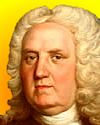
Born 11 Aug 1673; died 16 Feb 1754 at age 80.
British physician who contributed to preventive medicine and helped establish smallpox inoculation. He wrote works on plague, smallpox, measles and scurvy. His Mechanical Account of Poisons (1702) included observations from his tests of the effects of viper venom on the body. This treatise established his reputation, and he later enlarged and republished the book in 1743. To allay fears of a possible outbreak of plague, he published A Short Discourse Concerning Pestilential Contagion and the Methods to be Used to Prevent It (1720). He became wealthy as the pre-eminent medical practitioner of his day in London, and was physician to Royalty, statesmen and Sir Isaac Newton. Meade built an impressive collection of books, manuscripts, art and natural objects, but it was dispersed after he died.«
British physician who contributed to preventive medicine and helped establish smallpox inoculation. He wrote works on plague, smallpox, measles and scurvy. His Mechanical Account of Poisons (1702) included observations from his tests of the effects of viper venom on the body. This treatise established his reputation, and he later enlarged and republished the book in 1743. To allay fears of a possible outbreak of plague, he published A Short Discourse Concerning Pestilential Contagion and the Methods to be Used to Prevent It (1720). He became wealthy as the pre-eminent medical practitioner of his day in London, and was physician to Royalty, statesmen and Sir Isaac Newton. Meade built an impressive collection of books, manuscripts, art and natural objects, but it was dispersed after he died.«
Died 11 Aug 1977 at age 66 (born 26 Jun 1911).
British electrical and electronics engineer who, with Tom Kilburn, invented the Williams tube, a cathode-ray tube using the persistence of the image on the phosphor screen for data storage. This made possible the random access memory that launched the digital computer age. As the Chair in Electrotechnics at Manchester University, he incorporated this invention into the Mark I computer, the world's first stored-program digital electronic computer to be commercially produced during the early 1950's. more
British electrical and electronics engineer who, with Tom Kilburn, invented the Williams tube, a cathode-ray tube using the persistence of the image on the phosphor screen for data storage. This made possible the random access memory that launched the digital computer age. As the Chair in Electrotechnics at Manchester University, he incorporated this invention into the Mark I computer, the world's first stored-program digital electronic computer to be commercially produced during the early 1950's. more
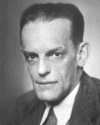
Died 11 Aug 1972 at age 73 (born 30 Jan 1899).
American microbiologist who won the 1951 Nobel Prize for Physiology or Medicine for his research on yellow fever. Theiler's discovery that mice are susceptible to yellow fever facilitated research and eventual development of a vaccine against the disease in humans. Upon graduation from medical training in tropical medicine in London, he joined the department of tropical medicine at the Harvard Medical School, U.S. and studied infectious diseases. His research on yellow fever led to development of the first attenuated strain of the virus. He moved to the Rockefeller Institute for Medical, N.Y. (1930-64), where with his associates he developed the improved (17-D) vaccine, widely used for human immunization against yellow fever.
American microbiologist who won the 1951 Nobel Prize for Physiology or Medicine for his research on yellow fever. Theiler's discovery that mice are susceptible to yellow fever facilitated research and eventual development of a vaccine against the disease in humans. Upon graduation from medical training in tropical medicine in London, he joined the department of tropical medicine at the Harvard Medical School, U.S. and studied infectious diseases. His research on yellow fever led to development of the first attenuated strain of the virus. He moved to the Rockefeller Institute for Medical, N.Y. (1930-64), where with his associates he developed the improved (17-D) vaccine, widely used for human immunization against yellow fever.
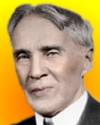
Died 11 Aug 1955 at age 87 (born 2 May 1868). quotes
Robert Williams Wood was an American physicist who photographed the reflection of sound waves in air, and investigated the physiological effects of high-frequency sound waves. The zone plate he devised could replace the objective lens of a telescope. He invented an improved diffraction grating, did research in spectroscopy, and extended the technique of Raman spectroscopy (a method to study matter using the light scattered by it.) He made photographs showing both infrared and ultraviolet radiation and was the first to photograph ultraviolet fluorescence. Wood was the first to observe the phenomenon of field emission in which charged particles are emitted from conductors in an electric field.«
Robert Williams Wood was an American physicist who photographed the reflection of sound waves in air, and investigated the physiological effects of high-frequency sound waves. The zone plate he devised could replace the objective lens of a telescope. He invented an improved diffraction grating, did research in spectroscopy, and extended the technique of Raman spectroscopy (a method to study matter using the light scattered by it.) He made photographs showing both infrared and ultraviolet radiation and was the first to photograph ultraviolet fluorescence. Wood was the first to observe the phenomenon of field emission in which charged particles are emitted from conductors in an electric field.«
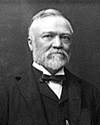
Died 11 Aug 1919 at age 83 (born 25 Nov 1835). quotes
Scottish-born American steel industrialist and humanitarian who began his career in the iron and steel business in 1865, focussed on steeel from 1873, owned Homestead Steel Works in 1888, and by 1899 had founded the Carnegie Steel Co., which merged with United States Steel Corp. in 1901. He then devoted the rest of his life to philanthropy, especially as a benefactor of over 1700 libraries. He also supported public education, and international peace. His parents were handloom weavers in Scotland, made poor by the advent of mechanized factories, and the family emigrated to Pittsburgh, Pennsylvania, U.S., in 1848. At age 17, he became a telegraph operator, and by 1859 was vice-president of the Pennsylvania Railroad.«
Scottish-born American steel industrialist and humanitarian who began his career in the iron and steel business in 1865, focussed on steeel from 1873, owned Homestead Steel Works in 1888, and by 1899 had founded the Carnegie Steel Co., which merged with United States Steel Corp. in 1901. He then devoted the rest of his life to philanthropy, especially as a benefactor of over 1700 libraries. He also supported public education, and international peace. His parents were handloom weavers in Scotland, made poor by the advent of mechanized factories, and the family emigrated to Pittsburgh, Pennsylvania, U.S., in 1848. At age 17, he became a telegraph operator, and by 1859 was vice-president of the Pennsylvania Railroad.«
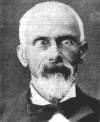
Died 11 Aug 1892 at age 68 (born 21 Oct 1823).
Italian mathematician who is noted for his contributions to algebra and topology. His early work is in the area of equations and algebra. He wrote the first rigorous exposition of the theory of equations, previously given without proofs, developed by the noted French mathematician Évariste Galois (1811-32). Betti extended and gave proofs relating to the algebraic concepts of Galois, published in several works from 1851. Betti thus made an important contribution to the transition from classical to modern algebra. He was the first to give a proof that the Galois group is closed under multiplication. Betti also wrote a pioneering memoir on topology, the study of surfaces and space. Betti did important work in theoretical physics, in particular in potential theory and elasticity.
Italian mathematician who is noted for his contributions to algebra and topology. His early work is in the area of equations and algebra. He wrote the first rigorous exposition of the theory of equations, previously given without proofs, developed by the noted French mathematician Évariste Galois (1811-32). Betti extended and gave proofs relating to the algebraic concepts of Galois, published in several works from 1851. Betti thus made an important contribution to the transition from classical to modern algebra. He was the first to give a proof that the Galois group is closed under multiplication. Betti also wrote a pioneering memoir on topology, the study of surfaces and space. Betti did important work in theoretical physics, in particular in potential theory and elasticity.
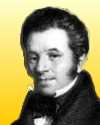
Died 11 Aug 1857 at age 67 (born 18 Feb 1790). quotes
English physiologist who was the first to advance a scientific explanation of reflex action. Although Hall earned his living as a practitioner, he was deeply interested in experimentation. A prolific writer, he wrote 19 books and more than 150 papers. Between 1824 and 1830, Hall published several papers and a book on the consequences of blood-letting. Hall published a pioneering book (1817) on diagnosis. In 1833, Hall described the mechanism by which a stimulus can produce a response independently of sensation or volition and coined the term "reflex" in the biological context. For the first time, the concept of the reflex arc was adopted as a basic mechanism of nervous disease, thus Hall may be called "the father of modern neurology."
English physiologist who was the first to advance a scientific explanation of reflex action. Although Hall earned his living as a practitioner, he was deeply interested in experimentation. A prolific writer, he wrote 19 books and more than 150 papers. Between 1824 and 1830, Hall published several papers and a book on the consequences of blood-letting. Hall published a pioneering book (1817) on diagnosis. In 1833, Hall described the mechanism by which a stimulus can produce a response independently of sensation or volition and coined the term "reflex" in the biological context. For the first time, the concept of the reflex arc was adopted as a basic mechanism of nervous disease, thus Hall may be called "the father of modern neurology."
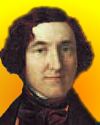
Died 11 Aug 1854 at age 56 (born 11 Apr 1798).
Italian physicist who was the first to extensively research infrared radiation. Sir William Frederick Herschel discovered infrared radiation in 1800, but research stalled until the invention of a thermopile in 1830. That instrument was a series of strips of two different metals that produced electric current when one end was heated. Melloni improved the thermopile and used it to detect infrared radiation. In 1846, from an observation point high on Mount Vesuvius, he measured the slight heating effect of moonlight. He showed also that rock salt, being transparent to infrared, made suitable lenses and prisms to demonstrate the reflection, refraction, polarization and interference of infrared in the same manner as visible light. more
Italian physicist who was the first to extensively research infrared radiation. Sir William Frederick Herschel discovered infrared radiation in 1800, but research stalled until the invention of a thermopile in 1830. That instrument was a series of strips of two different metals that produced electric current when one end was heated. Melloni improved the thermopile and used it to detect infrared radiation. In 1846, from an observation point high on Mount Vesuvius, he measured the slight heating effect of moonlight. He showed also that rock salt, being transparent to infrared, made suitable lenses and prisms to demonstrate the reflection, refraction, polarization and interference of infrared in the same manner as visible light. more
Died 11 Aug 1851 at age 72 (born 1 Aug 1779). quotes
German naturalist who offered early evolutionary ideas and stimulated comparative anatomy. He theorized (incorrectly) that the skull was a modified vertebra, but formed some fundamental concepts which stimulated further thought from later scientists. In Die Zeugung, he discussed “the infusoria”—elementary units of living organisms—into which all flesh can be broken down. Higher animals, he proposed, consisted of constituent animalcules. Entities, whether plants or animals, became organisms by the fusion of these primal animals. Those elements lose all individuality and create a higher unity. Lorenz Oken wrote many books on natural history for students and adults, founded a scholarly journal (contributing most of its articles), and organized scientific congresses.«
German naturalist who offered early evolutionary ideas and stimulated comparative anatomy. He theorized (incorrectly) that the skull was a modified vertebra, but formed some fundamental concepts which stimulated further thought from later scientists. In Die Zeugung, he discussed “the infusoria”—elementary units of living organisms—into which all flesh can be broken down. Higher animals, he proposed, consisted of constituent animalcules. Entities, whether plants or animals, became organisms by the fusion of these primal animals. Those elements lose all individuality and create a higher unity. Lorenz Oken wrote many books on natural history for students and adults, founded a scholarly journal (contributing most of its articles), and organized scientific congresses.«
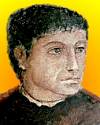
Died 11 Aug 1464 (born 1401). quotes
German theologian, influential philosopher, mathematician, and scientist. His scientific ideas, shrouded in theological language, were his personal speculations. Before Copernicus by half a century, he suggested that the Earth was a nearly spherical shape, turned on its axis and revolved around the Sun (1440); that each star is itself a distant sun with inhabited worlds in orbit; and that space was infinite. In mathematics, he contributed concepts of the infinitesimal and of relative motion. He made spectacles for nearsighted people using concave lenses, departing from the usual and more easily produced convex shape that worked only for farsighted users. He considered air as a source of some sustenance for plants, and recognized the pulse for diagnosis.
German theologian, influential philosopher, mathematician, and scientist. His scientific ideas, shrouded in theological language, were his personal speculations. Before Copernicus by half a century, he suggested that the Earth was a nearly spherical shape, turned on its axis and revolved around the Sun (1440); that each star is itself a distant sun with inhabited worlds in orbit; and that space was infinite. In mathematics, he contributed concepts of the infinitesimal and of relative motion. He made spectacles for nearsighted people using concave lenses, departing from the usual and more easily produced convex shape that worked only for farsighted users. He considered air as a source of some sustenance for plants, and recognized the pulse for diagnosis.
Nicholas of Cusa: Selected Spiritual Writings, by Nicholas of Cusa and H. Lawrence Bond (trans.). - book suggestion.
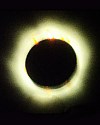
In 1999, the last total eclipse of the millenium occurred. Because it travelled across many populated areas, it was perhaps the most-watched eclipse of all time, seen by possibly 350 million people. Totality occurred first over the mid-Atlantic Ocean. The first land crossed by the moon's shadow was the Isles of Scilly, then the far south-west of England, in Cornwall. Although the sun was obscured by clouds there, a dramatic darkness fell, and the temperature dropped, during the totality lasting 1-min 30-sec. From there the path of totality tracked across Europe, India and Iran. In Egypt, Muslims were ordered by clerics to shut themselves away, but Jordan and Syria declared a national holiday.«[Image: total eclipse viewed from an airplane above the clouds in Cornwall.]
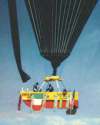
In 1978, the first successful crossing of the Atlantic Ocean by balloon began when three Americans, Ben Abruzzo, Maxie Anderson and Larry Newman, took off in their Double Eagle II from Presque Isle, Maine. Their 3,100-mile flight ended on 17 Aug 1978, 137-hr 6-min later, in France. The helium balloon Double Eagle II was 112-ft high, 65-ft diam., capacity 160,000 cu.ft. with a 15x7x4½-ft passenger gondola named The Spirit of Albuquerque. The underside of the gondola was a twin-hulled catamaran to provide emergency flotation for any unplanned water landing. Double Eagle II was built by Ed Yost. The history of transatlantic balloon crossing included seventeen prior unsuccessful attempts and seven lives lost.«[Image: Double Eagle II gondola]
In 1968, the last British Rail steam locomotive used to haul a passenger train in regular service ran on the Liverpool to Carlisle route.
In 1962, the Soviet Union launched cosmonaut Andrian Nikolayev on a 94-hour flight in Vostok III, which set an endurance record at the time. Eighteen months after Yury Gagarin became the first man in space (12 Apr 1961), Nikolayev became Russia’s third cosmonaut to travel into space. Pavel Popovich was launched in Vostok IV the next day. The pair made the first simultaneous flights; both returned on 15 Aug. Nikolayev’s flight set an endurance record, circling the Earth 64 times in 96 hours, having completed 1,650,000 miles. He returned to space in 1970 for his second and final mission on the Soyuz 9 craft, setting a new endurance record, spending 18 days in space in Soyuz 9. He was twice named a Hero of the Soviet Union.

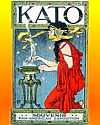
In 1903, the first U.S. patent for instant coffee was issued to Satori Kato of Chicago, Illinois. It was entitled "Coffee Concentrate and Process of Making Same" (No. 735,777). The application was filed 17 Apr 1901, in which year his Kato Coffee Company introduced the product at the Pam-American Exposition in Buffalo. Two years earlier, four men had formed the company when an American coffee importer and a roaster contacted Sartori Kato (the Japanese inventor of a soluble tea), who adapted his process of dehydration to coffee, with the assistance of an American chemist.[Image: Souvenir from the 1901 Pan-American Exposition.]
In 1896, the first U.S. patent for an electric light bulb socket featuring an on-and-off pull chain was issued to Harvey Hubbell of Bridgeport, Connecticut (No. 565,541). On 8 Nov 1904, he patented a separable electric plug (No. 774250) adapting an Edison screw socket to a flat prong style. His inventions are now familiar throughout North America. His manufacturing company, Harvey Hubbell Inc. still exists today.
In 1874, Harry S. Parmelee of New Haven, Conn. received a patent for the sprinkler head.

In 1871, an explosion at the factory of Patent Gun Cotton Company, Stowmarket, Suffolk, England, killed 24 people and injured many more It happened in the early afternoon, devastating the factory and left a crater 100-ft long and 10-ft deep. Windows were blown in all over Stowmarket ands roofs damaged, and the explosion was heard up to ten miles away. It was the biggest disaster ever to hit the town. The inquest found that it had probably been caused by sabotage but no one was ever brought to trial. It has been suggested that the findings were a whitewash which helped prevent any criticism falling on the heads of the factory or the inventor of the process. (Guncotton was first patented by Christian Frederick Schönbein in 1846)
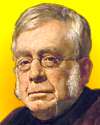
In 1835, George B Airy began his 46-year reign as England's seventh Astronomer Royal.

